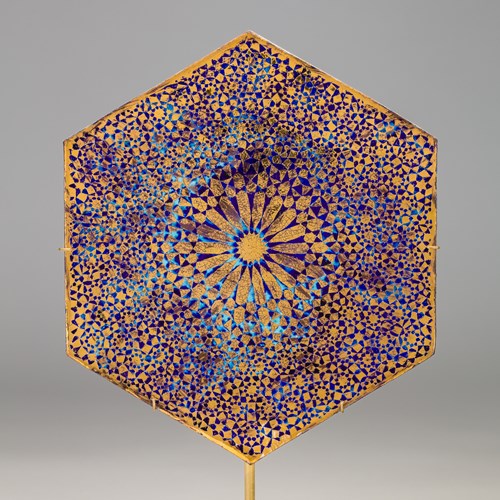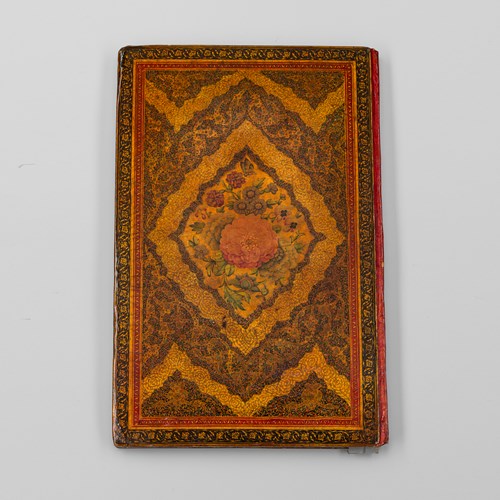Spanish Escritorio (“Writing Desk”)
Period 16th-17th century
Origin Spain
Medium Walnut, Inlaid coloured wood and bone
Dimension 64.4 x 111 x 38 cm (25³/₈ x 43³/₄ x 15 inches)
Perhaps amongst the most distinctive pieces of Spanish furniture, cabinets in this form were originally known as escritorio (“writing desk”) in the sixteenth century, rather than by the more common name, vargueño, which was introduced in the beginning of the nineteenth century. This change of name came about supposedly because such cabinets were made in the town of Vargas in the province of Toledo during the sixteenth and seventeenth centuries. Such practical pieces later rested on trestle stands of the same width but were not connected to the cabinet itself. Moreover, they were usually Mudéjar ornaments, as is evident by the combination of Western European and Islamic motifs. Indeed, on this cabinet there is an emblem shape centralised on the door with Arabic inscriptions running diagonally through which includes the word lillah (“to God”).
The Victoria and Albert Museum in London has a smaller cabinet with similar star and diamond designs which form floral motifs (Accession Number: W.104:1-1921).
Stock no.: A5056
Period: 16th-17th century
Origin: Spain
Medium: Walnut, Inlaid coloured wood and bone
Dimension: 64.4 x 111 x 38 cm (25³/₈ x 43³/₄ x 15 inches)
Literature: Further Literature:
María Paz Aguiló Alonso. 1993. El mueble en España, Siglos XVI-XVII. Madrid: Consejo Superior de Investigaciones Científicas.
Colum Hourihane. 2012. “Spain, V: Furniture”. In The Grove Encyclopedia of Medieval Art and Architecture, Volume 2, edited by Colum Hourihane, pp. 612-37. Oxford: Oxford University Press.
More artworks from the Gallery


_T637433018254717198.jpg?width=2000&height=2000&mode=max&scale=both&qlt=90)


 Flower (Large)_T638206163546965508.JPG?width=500&height=500&mode=pad&scale=both&qlt=90&format=jpg)



